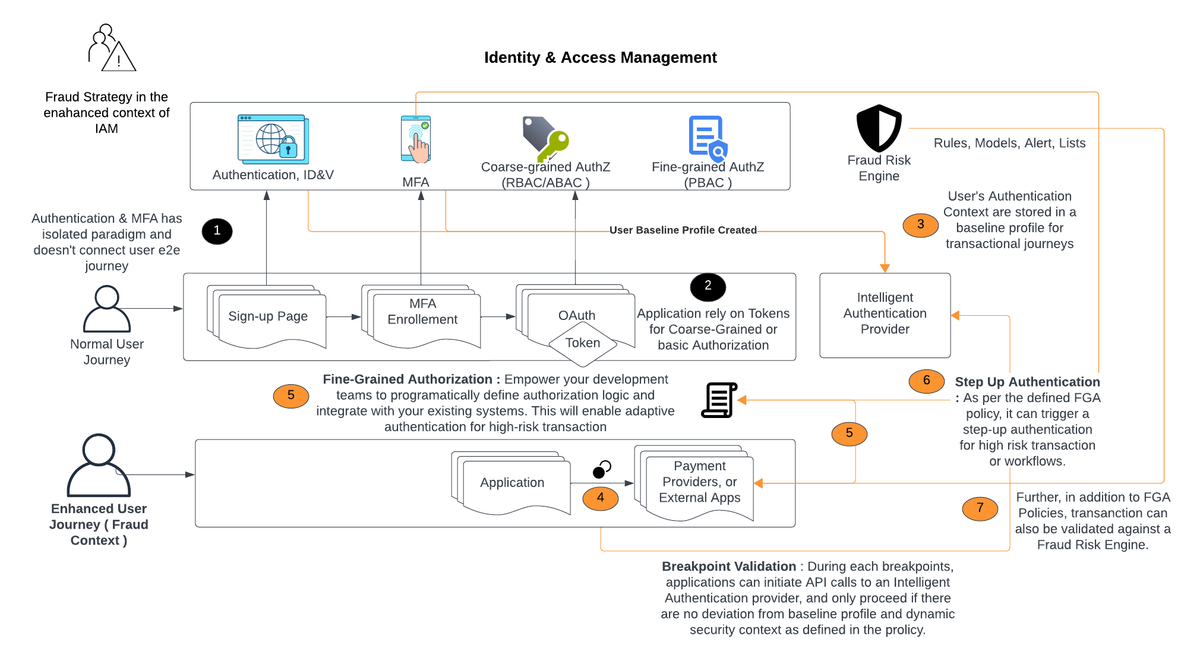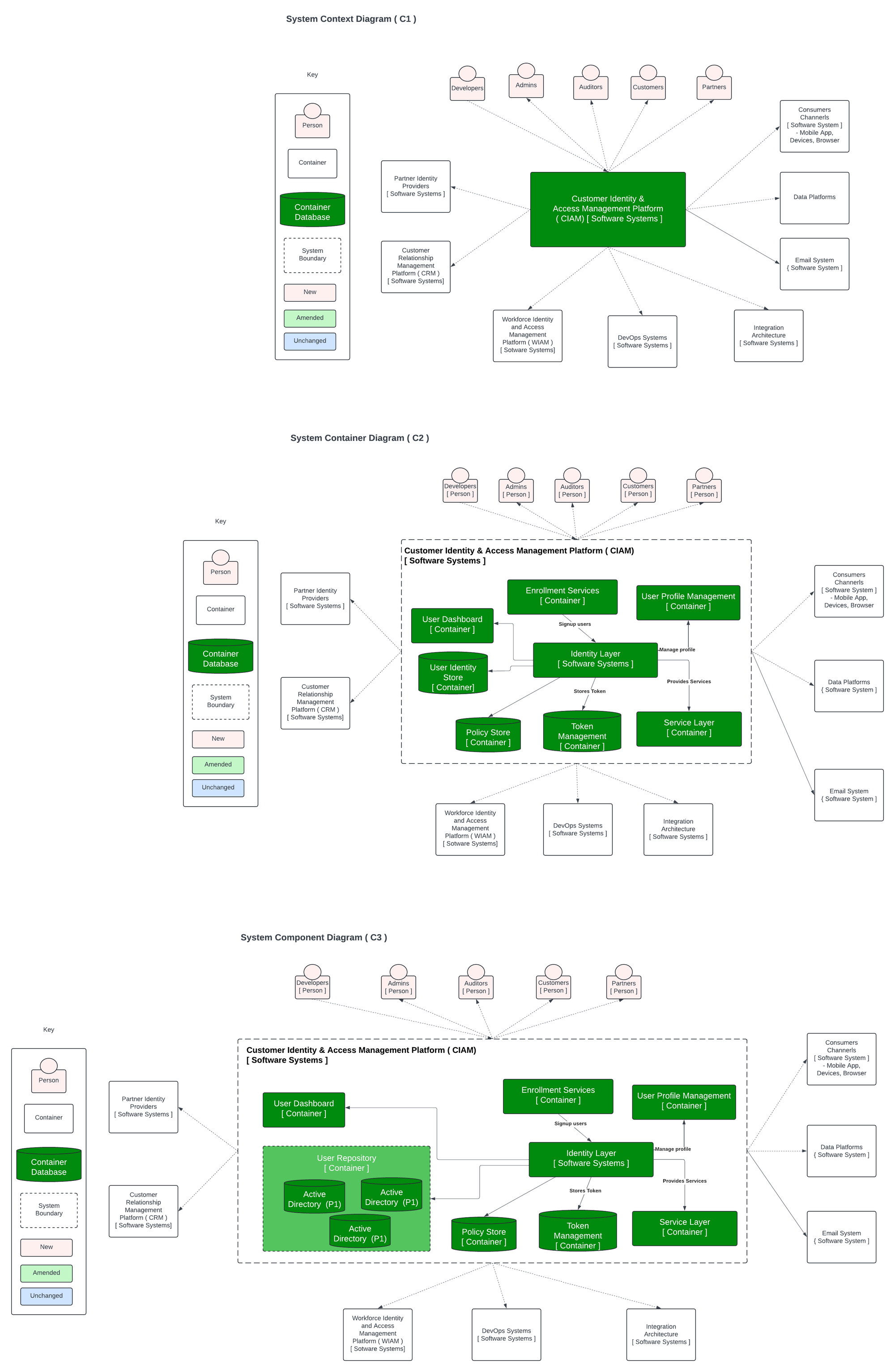Identity and the Fraud Context

The image above depicts a flowchart illustrating an enhanced identity and access management (IAM) process with fraud detection capabilities. Here's a breakdown of the steps involved:
- User Sign-up: The process begins with a user signing up for an account. This typically involves creating a username and password, and may also involve Multi-Factor Authentication (MFA) enrollment.
- User Baseline Profile Created: Based on the user's sign-up information and any subsequent interactions with the system, a baseline profile is established. This profile includes contextual data such as location, device used, and typical transaction times.
- Normal User Journey: For low-risk transactions, users can proceed through a simplified authentication process, such as entering a username and password.
- Coarse-grained AuthZ (RBAC/ABAC): Once a user is authenticated, the system determines their authorization level using coarse-grained authorization. This typically involves predefined roles (RBAC) or attribute-based access control (ABAC) rules.
- Fine-grained Authorization: For high-risk transactions, or those that deviate from the user's baseline profile, a fine-grained authorization process may be triggered. This may involve additional authentication steps or approval from a security team.
- Step Up Authentication: When fine-grained authorization is required, the system may challenge the user with additional authentication methods such as fingerprint scan or a one-time code.
- Fraud Risk Engine: In addition to fine-grained authorization policies, transactions may also be evaluated by a fraud risk engine. This engine can analyze the transaction context for signs of fraudulent activity.
- Breakpoint Validation: Throughout the user journey, the system may validate the user's activity against their baseline profile and configured security policies. If there are significant deviations, the system may challenge the user for further authentication or block the transaction entirely.
Overall, this enhanced IAM process seeks to balance security with a frictionless user experience. By combining traditional authentication techniques with risk-based and contextual factors, the system can provide a more secure and adaptive approach to access management.



